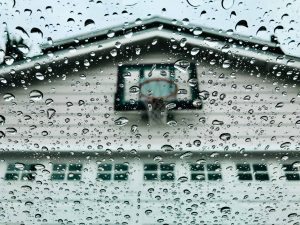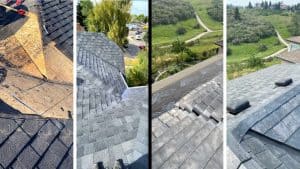When looking at roof replacement costs in 2025, we first need to define the climate we’re in—both economically and physically. Roofing prices vary throughout the year, and they vary even more by region. For the sake of this article, we’re focusing on Calgary, Alberta. That said, much of this information may still be useful if you’re elsewhere in Canada, like Ontario or Quebec.
With that out of the way, let’s answer the question on everyone’s mind: How much does a roof replacement cost in Calgary?
Or, more realistically, what you probably typed into Google: “how much roof cost”. We get it—adding that little “a” or “does” is tough. But at Whalley’s, details matter—and that’s the same approach we take to your roof.
So, without further ado, the answer is for the average cost is:
IT DEPENDS.
Now, before you go running off, we’ve included real examples below from typical roofing jobs around Calgary. But before you smash that “Cost Examples” link, we’d recommend taking a quick look at why costs can change—and how we calculate those numbers in the first place.
See cost examples or use the table of contents on the right to jump to what interests you most.
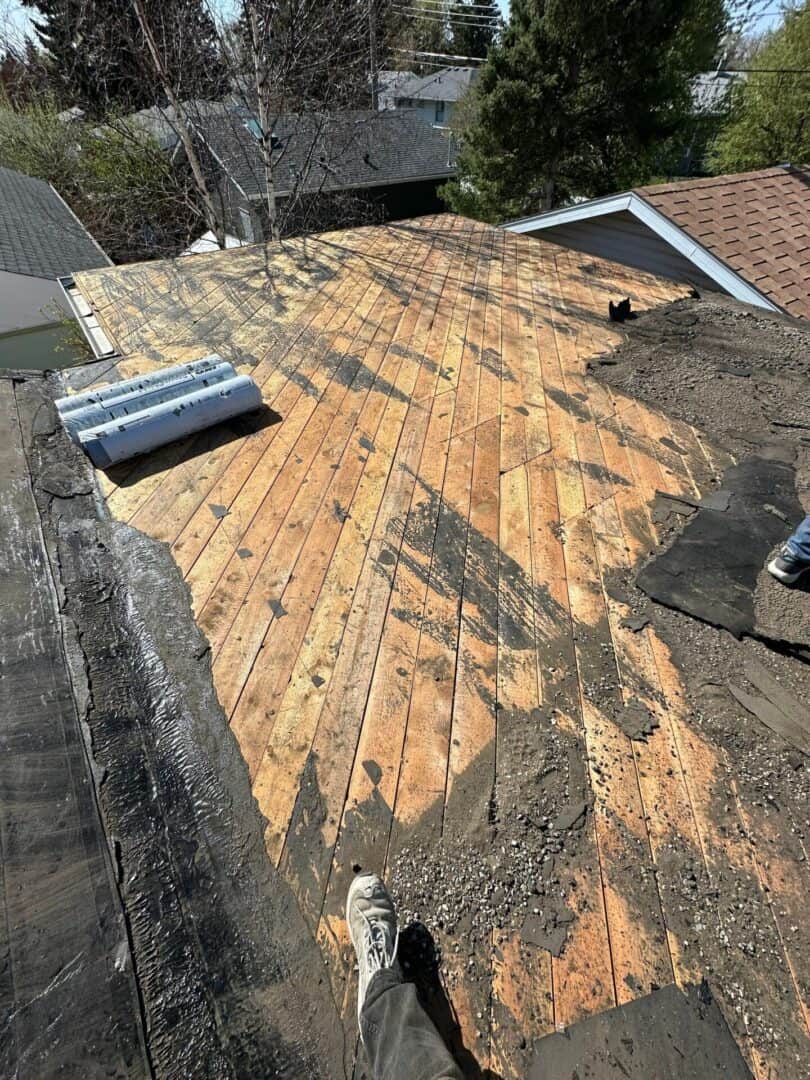
Do You Even Need a Full Roof Renovation?
We’ll be honest—sometimes you don’t.
Plenty of roofs in Calgary just need a roof repair rather than a full roof replacement, especially if the damage is confined to one area caused by a recent storm. In some cases, though, it’s not just about visible damage—it’s about old age, deteriorating materials, or years of weather exposure finally catching up to your home.
But when home insurance is involved, things can get a bit murky.
We often get asked: how do I get insurance to pay for roof replacement?
And the real answer is: it depends.
Insurance policies vary, and so do adjusters. Some will only approve roof replacement if damage meets a certain threshold. Others may suggest a patch job—but that’s not always in your best interest long-term, especially if your existing materials are near the end of their lifespan.
That’s where we come in.
We’ll assess the damage, explain what might be considered repairable vs. replaceable, and guide you on how to document everything properly. We’re not insurance adjusters, and we don’t make the final call—but as professional roofers, we can help you make sense of it all and present your case clearly. For more information look at other roof insurance posts about the topic.
We offer free inspections to help homeowners understand what’s going on with their roof—whether you’re worried about a leak, storm damage, or just general wear and tear. We will go over the cost of a roof repair and if its even feasible against a replacement.
Sometimes, what looks like a concern turns out to be nothing major—and if that’s the case, we’ll say so. We don’t recommend work you don’t need, and we never push unnecessary repairs just to pad a quote. That said, it’s rare that we don’t find at least something small worth mentioning—whether it’s a flashing detail, minor sealant wear, or early signs of aging.
If it turns out you need a full write-up for insurance purposes—including detailed photos, notes, and a professional opinion to support your claim—there is a modest fee for that extra work. It’s worth it as proper documentation can mean the difference between a smooth claim and a frustrating one.
We keep it fair, honest, and transparent—because that’s how we’d want to be treated, too.
Factors that influence roof replacement costs
When looking at the average cost, we need to factor in everything—from the type of roof (from sloped roofs to flat roofs—fun fact: flat roofs are just really shallow-sloped roofs) to the type of shingles or product you choose. Whether it’s a metal roof, a slate roof, or TPO or EPDM, the amount of roofing materials available today is staggering.
Then there’s roof size, labour costs, roof pitch (how steep your roof is), and one thing that’s often overlooked: complexity. A simple two-sided shingle roof without a bunch of weird edges, valleys, layers, or transitions is going to be a lot cheaper than the work of an architect who decided to be the next Picasso.
All jokes aside—we get the desire for a unique roof with great curb appeal. But the more features and complexity your roof has, the more areas there are that need extra attention and precision. And that leads to higher replacement costs.
At Whalley’s Four Seasons Roofing (W4SR), when we look at the cost of a roof renovation—whether it’s residential or commercial—we stick to what we know works best here in Calgary. That often means we don’t work with things like slate, metal, or green roofs in the traditional sense (i.e. living garden rooftops).
However, that doesn’t mean we ignore environmentally friendly solutions. We proudly install Euroshield, a green roofing alternative made from recycled tires and manufactured right here in Calgary. We’ll go into more detail on that later, especially why it’s one of the best choices for durability and sustainability in our climate.
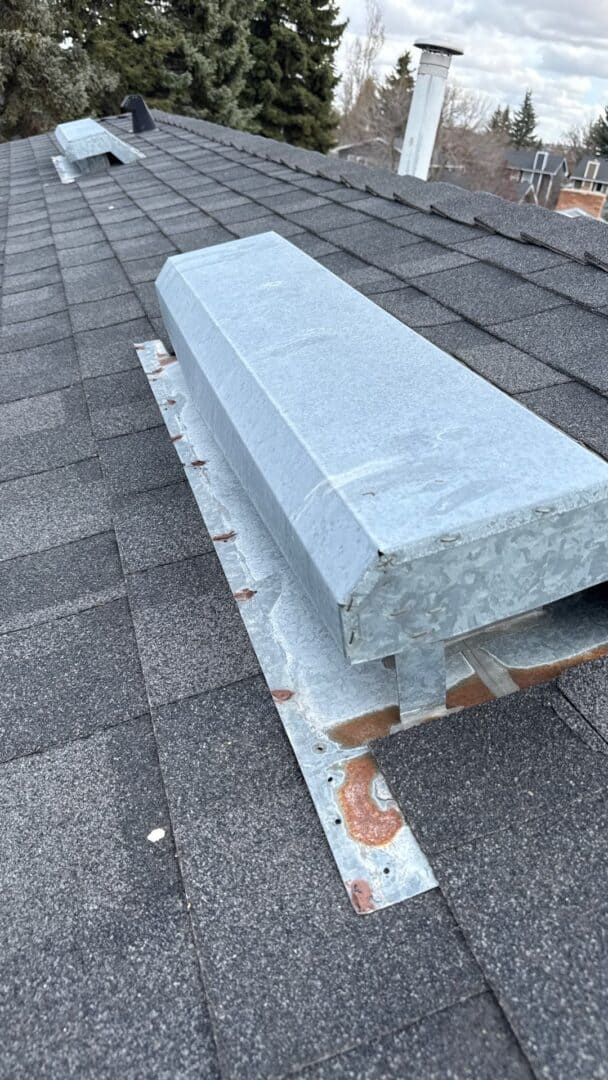
It’s not just the shingles or membrane that matter—it’s everything that sticks out of your roof. Vents, skylights, chimneys, flashing, plumbing stacks—every protrusion needs to be integrated properly into the roofing system. Neglecting vents, chimneys, or skylight flashing during a new roof install is like putting in brand-new floors and ignoring the leaky plumbing underneath. It might look great at first—but one small failure can undo all the work and cost you more in the long run.
Don’t let a small detail ruin an otherwise perfect roof install. We make sure the whole system is done right—from top to edge to every last vent.
The right roofing material types to consider in 2025
By this point, you’re probably starting to realize: there’s no one-size-fits-all solution when it comes to roofing. The right material depends on your budget, your home’s design—and how well that material stands up to Calgary’s unpredictable weather.
From freeze-thaw cycles to surprise hailstorms, Calgary puts every roof to the test. And while price is a major consideration, it’s not the only one. Longevity, maintenance, insurance coverage, and even resale value all play a role—especially if you’re choosing between repair and full replacement.
The good news? You don’t have to figure it all out yourself.
At Whalley’s Four Seasons Roofing, we take care of that part. We’ll walk your roof, look at the details, and give you the best material recommendations for your specific home—so you don’t need to stress over every single option.
But if you’re curious and want to learn the “why” behind our choices, this guide is for you.
Let’s break down the most common roofing materials used in Calgary in 2025—how they perform, what to watch for, and which ones we actually recommend.
Asphalt Shingle Roofing
Still the most common choice for Calgary homes, asphalt shingles are affordable, widely available, and quick to install. But not all asphalt shingles are created equal. From budget-friendly 3-tab to high-performance Class 4 options, understanding the differences can help you make a smarter decision—or just let us do it for you.

Here’s a quick breakdown of the main types:
- 3-Tab Shingles
Also known as strip shingles or traditional shingles, these are the simplest and most affordable asphalt type. They’re flat, single-layer, and have a uniform look. While they get the job done, they offer the least wind and hail resistance, which can be a downside in Calgary’s climate as we can get strong winds and as a result the ones we see most for roof repair for wind damage. - Architectural Shingles
Also called laminate or dimensional shingles, these are thicker and made of two fused layers. That extra depth improves durability and gives a more textured look. They’ve become the go-to option for most homes, offering better performance without a huge cost jump. - Premium/Designer Shingles
These shingles mimic the look of cedar shakes or slate but without the cost or weight. They offer great curb appeal and often come with longer warranties—but they also come with a higher price tag. - Performance Shingles (Class 4 Impact Rated)
Built specifically for hail, wind, and other harsh weather. These shingles are tested for impact resistance and may qualify for insurance discounts. They’re often used by homeowners looking for peace of mind and longer lifespans without going into premium-price territory.
No matter which type you choose, asphalt shingles have come a long way in terms of appearance and resilience. We’ll walk you through the best fit for your roof, budget, and long-term plans—and make sure the install is done right.
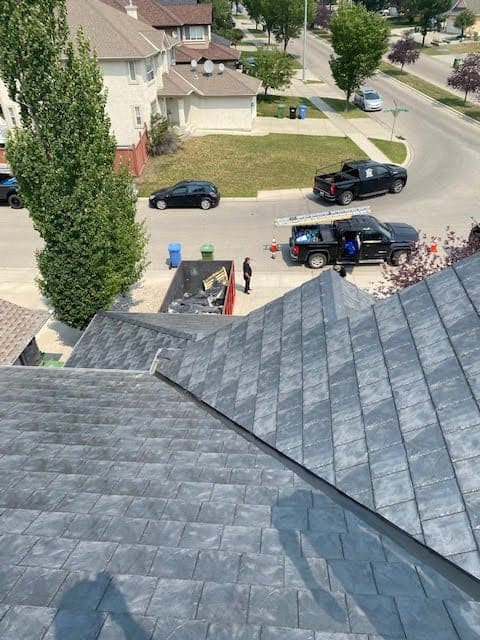
Euroshield Rubber Roofing
A locally made option from Calgary, this recycled rubber material is great for replacing asphalt shingles for superior hail resistance. It’s built for Canadian climates and is considered a green roof option due to its sustainability. A smart choice for homeowners who want durability without the environmental footprint of old roofing materials getting hauled to the landfill more often.
Metal Roof
Metal roofing costs more than asphalt but offers strong protection and a sleek look. While Whalley’s doesn’t typically install metal roofing or copper roofing, we often help homeowners evaluate their options. Some even consider steel shingles as a hybrid between traditional and modern styles.
Slate Roof
Slate is heavy, expensive, and long-lasting. It’s a beautiful, natural material—but for most Calgary homes, it’s not a practical choice. The structural reinforcement it requires, combined with its cost and the logistics of quarrying and transporting such a heavy product, make it less than ideal for our climate and housing stock. As Euroshield puts it (in a pretty markety—but not wrong—way):
“Slate shingles are expensive, heavy, and can crack under the weight of snow and hail. With Slate Roofing from Euroshield®, you get the aesthetic appeal of authentic slate but with the lightness of rubber, unprecedented durability, and comparative longevity—all at significantly lower cost.”
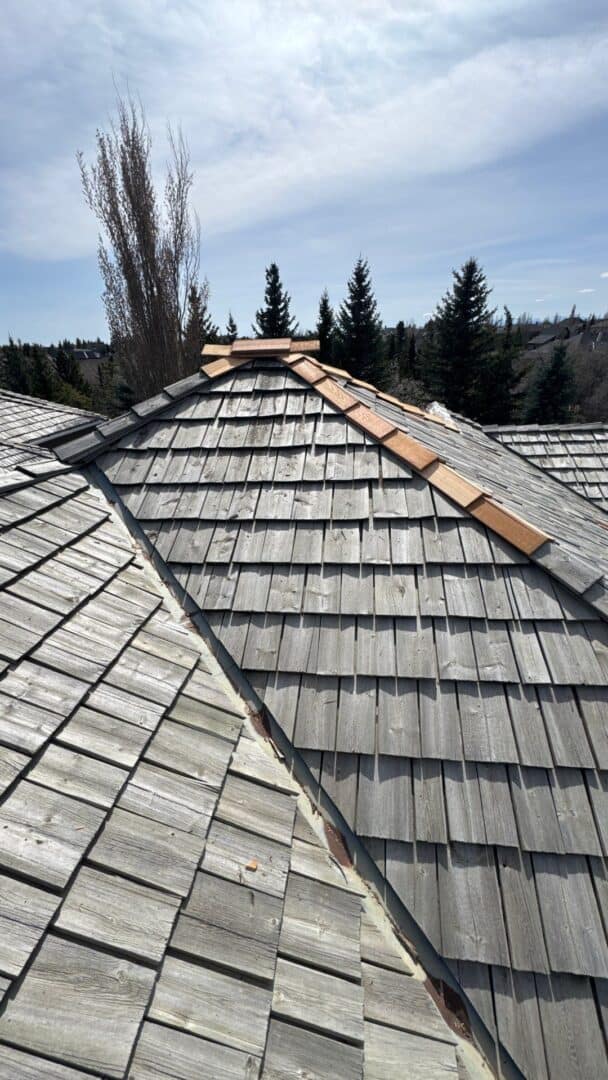
Cedar Shake and Wood Roofing
Cedar shakes used to be a go-to choice for premium residential roofs in Calgary. They offer natural insulation, rustic charm, and a traditional aesthetic that many homeowners still love.
That said, we don’t typically recommend wood shingles or shakes for new installations anymore—and here’s why:
- Maintenance: Wood roofs need consistent upkeep to prevent rot, moss, and splitting.
- Cost: High-quality cedar is expensive, and installation is labour-intensive.
- Fire Risk: Despite modern treatments, some insurance providers still raise premiums for wood roofs.
- Longevity: In Calgary’s freeze-thaw cycles and dry summers, cedar tends to age faster than in coastal or temperate climates.
However, we do still service existing cedar shake roofs. If you already have one, we’ll inspect it honestly, patch what we can, and help you plan for a future upgrade if needed. In many cases, we’ve helped homeowners extend the life of their cedar roof with targeted repairs or strategic overlays.
When it’s time to replace, we often recommend switching to Euroshield or a premium asphalt shingle that mimics the look of wood—without the downsides.
You still get great curb appeal—but with lower maintenance, better durability, and peace of mind when the next hailstorm rolls through.
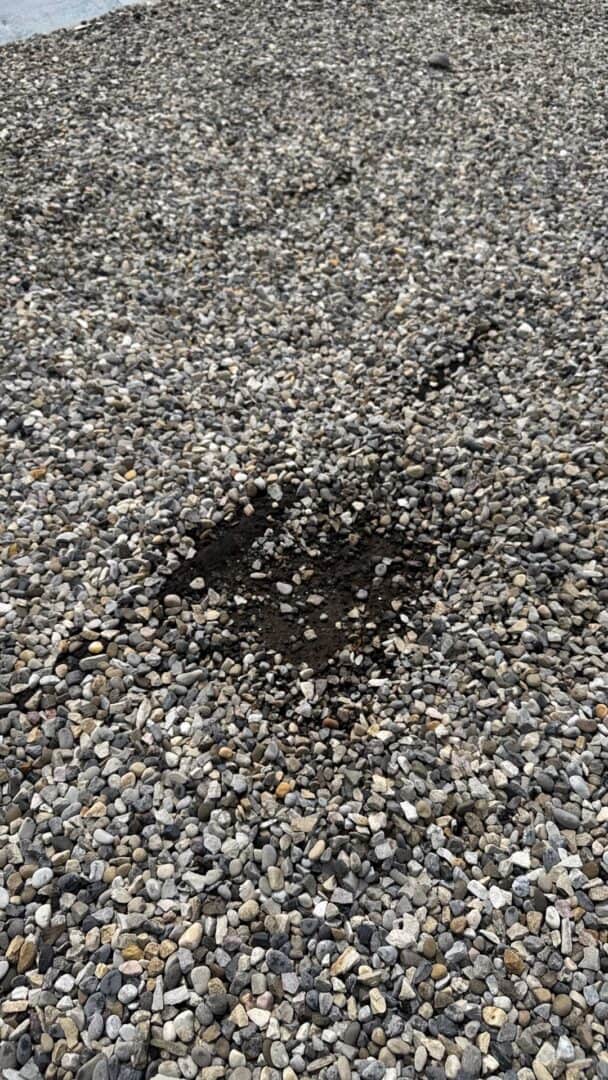
Asphalt and Gravel Roof (BUR)
Older flat roofs in Calgary often use a built-up roofing system (BUR) made from multiple layers of asphalt and gravel. While these roofs can still be found across the city, they’re increasingly being phased out. BUR systems are heavy, prone to leak issues over time, and require regular maintenance to stay watertight.
At Whalley’s, we do offer service and repairs for gravel roofs, but we typically recommend upgrading to a modern elastomeric membrane system. These newer systems are lighter, longer-lasting, and far easier to maintain—especially in Calgary’s freeze-thaw climate, which can take a toll on older BUR systems.
Torch-On and Elastome Membrane Roof
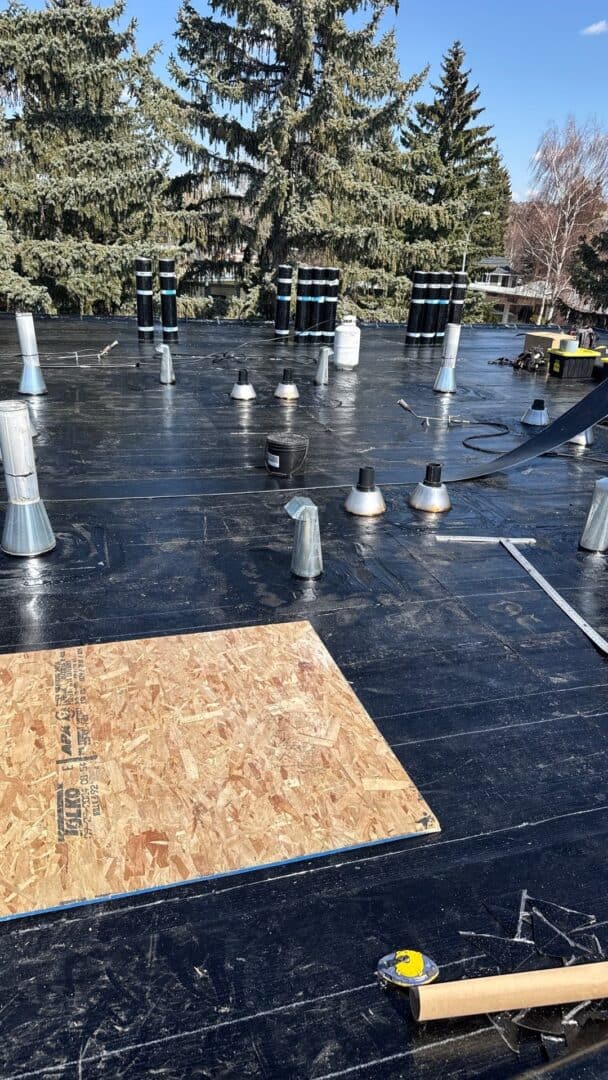
This is our go-to solution for flat or low-slope roofs. Torch-on SBS membrane systems (also known as elastomeric membranes) are engineered to handle harsh Canadian winters, UV exposure, and rapid temperature swings. These 2-ply systems provide excellent waterproofing through heat-welded seams and flexible materials that can expand and contract with the roof surface.
We’ve seen firsthand how well these membranes hold up in Calgary—and they’re a core part of our flat roofing services. They offer a great mix of durability, performance, and longevity, whether you’re roofing a garage, addition, or a full residential flat roof.
EPDM Membrane and TPO Roofing
While some contractors recommend EPDM (a synthetic rubber membrane) or TPO (a thermoplastic option), these materials haven’t proven as reliable in Calgary’s climate. They’re more common on large commercial buildings, where installation conditions are more controlled.
At Whalley’s, we don’t typically install TPO or EPDM roof. In our experience, these systems are more vulnerable to seam failures and don’t handle freeze-thaw cycles as well as SBS membrane systems. That said, if you’re comparing quotes and want to understand the pros and cons, we’re always happy to walk you through the differences.
Green Roofing Options
Not every “green roof” means a rooftop garden. While vegetative roofs are rare in Calgary’s residential sector, using long-lasting or recycled materials—like Euroshield or a properly installed elastomeric membrane—can significantly reduce waste over time.
If you’re looking to make an environmentally conscious decision, the best place to start is with longevity. A roof that doesn’t need to be replaced as often is the most sustainable option of all.
When it comes to finding the right roof in 2025, materials matter—but so does the installation. Even the best product won’t perform without skilled workmanship behind it.
The average cost of a roof includes more than just shingles or membranes. It’s about long-term value, and that depends on the roofers you trust to do the job right.
In the next section, we’ll look at why professional installation makes all the difference—and how to choose a roofing contractor who won’t cut corners

Why roofer workmanship matters more than materials
When most homeowners start a roof renovation project, they tend to focus on the obvious: Should we go with asphalt shingles, Euroshield, or something else? What’s the average lifespan, and what’s the cost of roof insulation? How does it all hold up through a Calgary winter?
But there’s a bigger question that often gets overlooked:
Who’s actually installing your roof?
Even the best product on the market—whether it’s a premium asphalt shingle roof or a high-end flat roof membrane system—can fail early if the workmanship isn’t there. And when that happens, the total cost of fixing the issue usually outweighs whatever was “saved” on a low bid.
What Happens When Workmanship Falls Short?
We’ve seen it all:
- Water infiltration from poorly sealed valleys or seams
- Overdriven fasteners that void asphalt shingle warranties
- Venting and roof insulation skipped or improperly installed
- Entire flat roofs redone because prep work—or application—was rushed. Like in the photo with visible bubbling, poor heat application during a torch-on install can lead to trapped air, weak bonding, and eventual seam failures. Those small bubbles? They can become big problems when water finds its way in.
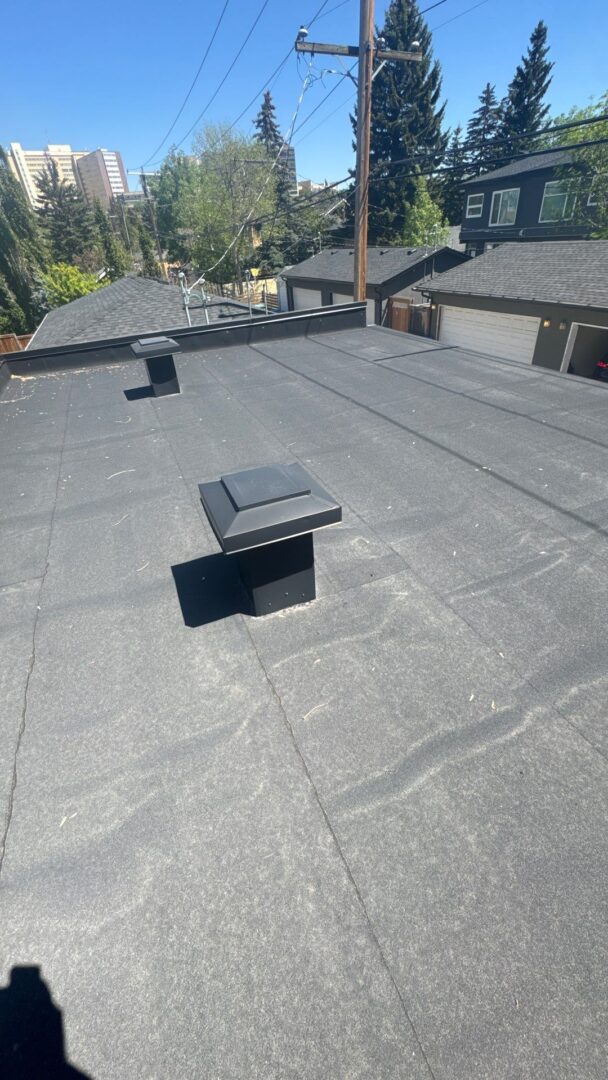
Torch-on flat roof with visible bubbling caused by insufficient heat during installation, increasing the risk of popped seams and future leaks.
In short: cutting corners with labour costs, creates more additional costs in the long run.
Flat Roofs Are Less Forgiving
One thing we try to help homeowners understand is that flat roofs aren’t necessarily harder to install—but they demand greater precision. Unlike sloped roofs that naturally shed water, flat roofing systems rely entirely on proper sealing and drainage. Every seam, every lap, every weld matters.
If something’s off, water sits—and that’s where issues begin.
That’s why our go-to for flat roofing is a torch-on SBS membrane system. It’s built for Calgary’s climate, including freeze-thaw cycles and sudden hail. When installed properly, these membranes last decades. But workmanship is critical: a bad install won’t just shorten the roof’s life—it can invite problems right from year one.
We’ve rebuilt flat roofs that were less than five years old—not because the material was faulty, but because the work was sloppy.
Our Approach to Workmanship and Warranties
At Whalley’s, we offer a one-year workmanship warranty. We know others may promise longer—but in our experience, some of the longest warranties are also the ones hardest to claim. Lots of fine print. Lots of “not covered.”
Instead, we keep it straightforward. We use products with strong manufacturer warranties, and we stand behind the work we do. And while our written warranty is one year for workmanship, we’ve helped clients well beyond that window when it felt like the right thing to do—at no cost to them.
We don’t advertise this as a promise. But our reviews speak for themselves. When you hire us, you’re not just buying materials. You’re getting experience, follow-through, and people who care about your home as much as you do.
Why the cost of a roof renovation isn’t just a number
There’s no universal answer to the average cost of a roofing project, because the price varies depending on everything from slope and surface area to material choices, accessibility, and even seasonal labour costs. But more importantly, it’s tied to global and regional factors—especially in 2025.
We’re talking:
- Material supply issues from global shipping slowdowns
- Increased manufacturing costs
- Alberta–Ontario trade disparities
- Skilled labour shortages
- Lingering inflation from economic disruptions
That’s why the cost of roof renovation today isn’t the same as it was even a year or two ago. And while we’ll always try to keep things fair and transparent, sometimes the market forces are simply outside everyone’s control.
Still—putting things off because the market isn’t ideal can backfire. Roof damage doesn’t wait for economic recovery. A leak in your current roof today could cost thousands more in hidden water infiltration or interior repairs next season.
So if you’re debating whether to hold off or move forward, consider the advantages and disadvantages carefully. Sometimes a short-term repair can buy time. But in many cases, a full repair or replacement decision needs to be made sooner rather than later.
Roofing Projects and Average Price Ranges in Calgary
These examples reflect real-world scenarios to help homeowners understand potential price ranges. They are not quotes but serve as guidance for common roof types in Calgary.
1. Basic Asphalt Shingle Roof (Single Slope or Gable Roof)
Average cost: $8,000–$12,000 for a typical 1,200–1,500 sq. ft. Calgary bungalow
- Asphalt shingle costs can vary based on product tier (standard 3-tab vs. Class 4 impact-rated)
- Labour costs are generally lower due to simpler preparation and installation
- Minimal structural or insulation upgrades are typically required
- Material pricing has risen in recent years due to inflation and supply chain challenges
- Best for: budget-conscious homeowners, first-time buyers, or those seeking cost-effective, reliable roofing solutions
2. Flat Roof Replacement with Elastomer Membrane (Torch-On SBS)
Flat roof replacement cost: $14–$18 per square foot
Total range: Approximately $12,000–$22,000+, depending on size and scope
- Ideal for garages, additions, or full-home low-slope roofs, duplexes or larger commercial areas.
- Price includes tear-off, primer, base sheet, and granulated cap sheet
- Proper installation prevents costly water infiltration issues
- Torch-on SBS is preferred in Calgary’s freeze-thaw climate for its durability
- Best for: homes with low pitch, intensive roof traffic, or previous leak concerns
3. Full Roof Renovation with Insulation and Venting Upgrades
Total cost: $16,000–$24,000+
- Includes decking repair, new underlayments, upgraded insulation, ridge, and soffit venting
- Often required for homes built pre-1980s or with known attic moisture issues
- Can lead to significant energy savings and increased lifespan of shingles
- May involve coordination with attic insulation contractors
- Best for: older homes, ice dam issues, attic condensation concerns
4. Premium Roof with Class 4 Shingles and Flashing Detail
Price range: $13,000–$17,000, depending on slope, size, and detail work
- High hail resistance can lead to insurance discounts in many Calgary neighborhoods
- Premium ridge cap, starter strip, synthetic underlay, and detailed flashing installation
- Class 4 shingles include extended manufacturer warranties (up to 50 years)
- Often selected by homeowners planning to stay long-term
- Best for: homeowners seeking enhanced durability, potential insurance benefits, and long-term value
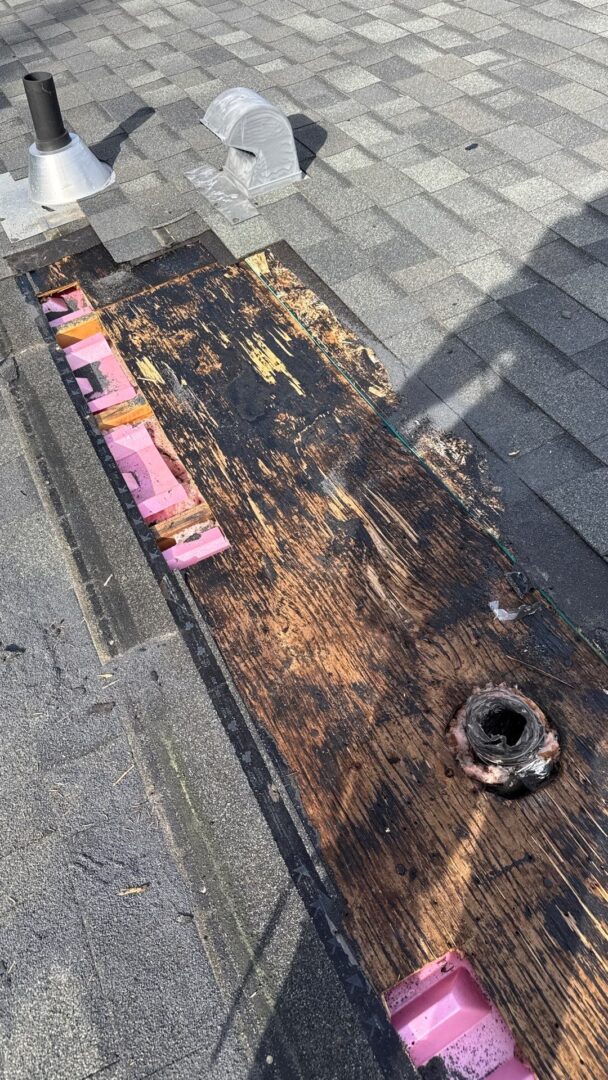
Close-up of a roof deck with severe wood rot and mold damage revealed during a roofing tear-off.
5. Rot Repairs and Structural Work Before Re-Roofing
Additional costs: $500–$4,000, depending on scope
- Often uncovered during tear-off or attic inspection
- May include rafter sistering, sheathing replacement, fascia rebuilds, or chimney support work
- Adds to timeline but prevents future structural failures
- Why it matters: Addressing these issues proactively ensures safety and longevity, preventing more significant problems down the line
Alberta vs ontario: does region matter?
Yes—and no.
While many material prices are set nationally, some roofers in Ontario or BC face different labour costs, code requirements, and supplier markups. A flat roof replacement in downtown Toronto, ontario will often cost more than in Calgary—just due to access issues alone.
That said, Calgary has its own price pressures too: sudden hail events, insurance-driven timelines, and seasonal bottlenecks. We see major roofing project surges after summer storms, which can drive labor costs and availability way up. Booking early helps. Take a look at Statistics Canada’s findings.
Final Thoughts for homeowners on the average cost for a roof in 2025
The best way to approach pricing? Think long-term. The cheapest bid isn’t always the best deal—and often comes with hidden additional costs, rushed timelines, or surprise “upgrades” mid-job. The average lifespan of your new roof depends just as much on who’s installing it as what it’s made from.
At Whalley’s, we are roofers that quote based on actual need—not upsells. We’ll give you the numbers, the reasoning, and the options—so you can make the right call for your home and budget. Get the best possible price without any corners skipped a reach out today.

